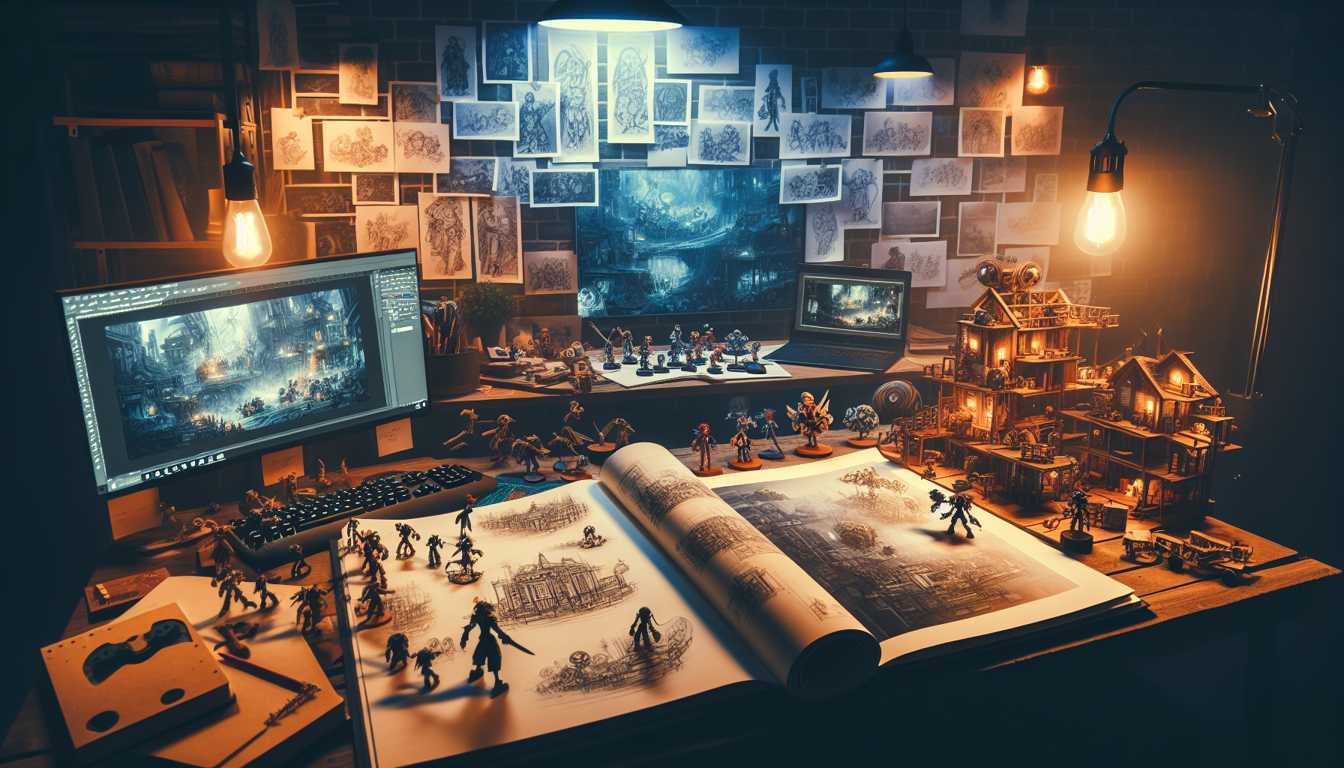
The Art of Game Design: An Inside Look at Creating Immersive Worlds
The landscape of digital entertainment has been profoundly shaped by the art of game design. It's a complex blend of creativity, technology, storytelling, and player psychology. In this comprehensive exploration, we'll delve into the intricate world of game design, uncovering the secrets behind creating immersive digital worlds that capture the imagination of players around the globe.
Understanding Game Mechanics
Core Gameplay
Game mechanics are the foundation of any game. They define how players interact with the game world and what makes the game unique. Consider "Minecraft," where the core mechanic is the ability to mine and build, creating a limitless playground for creativity. Similarly, "The Legend of Zelda: Breath of the Wild" revolutionized open-world games with its physics-based mechanics and open-ended exploration, providing a sense of freedom and discovery.
Balancing and Difficulty
The art of balancing a game is crucial for maintaining player interest. Games like "Dark Souls" and "Celeste" strike a balance between challenge and reward, offering a sense of accomplishment through overcoming difficult obstacles. Effective difficulty scaling can make or break a game's success, as it directly impacts player satisfaction.
Narrative and Storytelling
Crafting a Compelling Story
A strong narrative can elevate a game from a mere entertainment medium to an art form. Games like "The Last of Us" and "Mass Effect" offer rich, character-driven stories, creating emotional connections and a deeper engagement. The narrative can be linear, like in "God of War," or branching, as seen in "Detroit: Become Human," offering multiple paths and endings based on player decisions.
World-Building
Creating an immersive world involves meticulous design and attention to detail. Open-world games like "Skyrim" and "Red Dead Redemption 2" provide vast, living worlds filled with lore, culture, and dynamic ecosystems. This sense of place is crucial for player immersion and long-term engagement.
Visual and Audio Aesthetics
Graphics and Art Style
The visual presentation of a game is a key aspect of its appeal. The artistic style can vary widely – from the hyper-realistic graphics in "The Witcher 3" to the cartoonish charm of "Splatoon." Artistic direction must align with the game's tone and narrative to create a cohesive experience.
Sound Design
Sound design and music are integral to building the game's atmosphere. The eerie soundtrack of "Bloodborne" and the immersive soundscapes of "Battlefield" demonstrate how audio can enhance gameplay and mood. Voice acting also plays a critical role in bringing characters to life and enhancing the narrative.
Technology and Innovation
Game Engines and Tools
The choice of game engine impacts what's possible in game design. Engines like Unreal Engine and Unity provide the necessary tools for creating diverse experiences. "Fortnite" uses Unreal Engine to handle its dynamic environments and large player base, while "Monument Valley," made with Unity, shows the engine's versatility for mobile game development.
Emerging Technologies
The integration of VR and AR is transforming game design. VR games like "Half-Life: Alyx" offer an unprecedented level of immersion, while AR games like "Pokémon GO" blend the digital and real worlds, creating new types of gaming experiences.
Player Interaction and Community
Multiplayer and Social Gaming
Online multiplayer games have created vast, interactive communities. Games like "League of Legends" and "Fortnite" are not just games; they are social platforms, bringing people together from across the globe.
Community Engagement
Many developers now actively engage with their player base. Games like "Warframe" and "Minecraft" have thrived on community feedback, evolving over time to better suit player preferences.
Game Accessibility and Inclusivity
Designing for All Players
Game accessibility has become a significant focus in the industry. Titles like "The Last of Us Part II" have set new standards with their extensive accessibility options, ensuring that games are playable and enjoyable for a wider audience, including those with disabilities.
Cultural Representation
The representation of diverse cultures and identities in games is also gaining attention. Games like "Assassin's Creed" series and "Spiritfarer" showcase different cultures and narratives, promoting inclusivity and understanding.
Conclusion
The art of game design is a constantly evolving field, pushing the boundaries of technology, storytelling, and interactive entertainment. As we look to the future, we can expect games to become more immersive, inclusive, and reflective of our diverse society. From the fundamental game mechanics to the final polish of sound and graphics, every aspect of game design plays a crucial role in crafting these virtual worlds that continue to captivate and amaze us.



